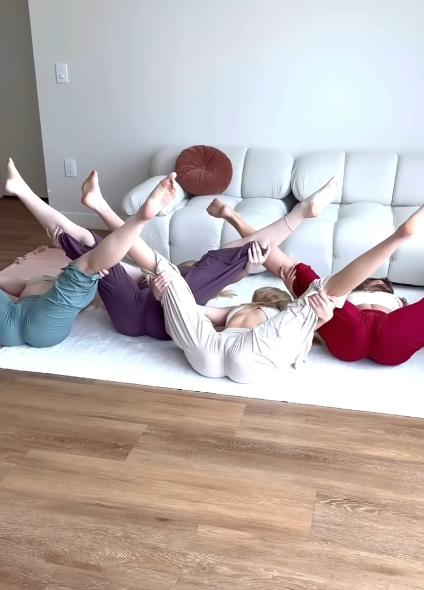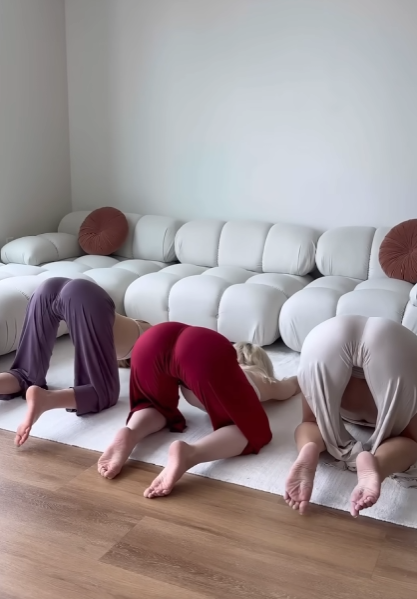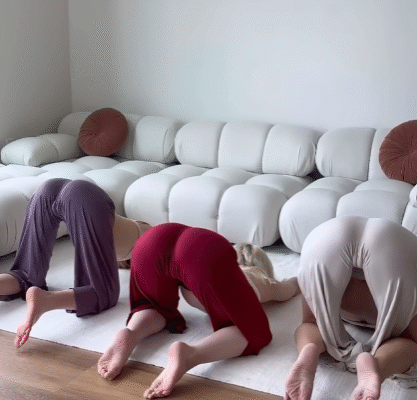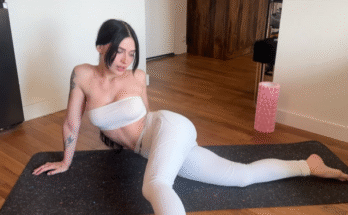
When most people think about flexibility, their minds jump to splits, hamstring stretches, or hip openers. Yet, one of the most overlooked areas that deserves just as much attention is the shoulder and upper back region. These two areas of the body carry a surprising amount of tension, especially for individuals who sit at desks, work with computers, drive for long hours, or engage in heavy lifting. Incorporating shoulder and upper back stretches into your daily routine can not only release stiffness but also improve posture, reduce pain, and even boost breathing efficiency.
In this article, we’ll explore why shoulder and upper back stretching matters, what benefits it brings, and which specific stretches you can practice safely at home or in the office.
Why Shoulder & Upper Back Stretching is Important
Our modern lifestyle has contributed to a surge in shoulder and back-related issues. Here’s why stretching this region is essential:
- Combatting poor posture – Slouching while using a phone or sitting hunched over a laptop places the shoulders in a rounded-forward position. Over time, this can lead to muscular imbalances. Stretching helps reverse this effect.
- Reducing stiffness from sedentary habits – Lack of movement causes muscles and connective tissue to tighten. Targeted stretches restore range of motion.
- Improving circulation and mobility – When muscles are lengthened and mobilized, blood flow increases, delivering nutrients and oxygen to tissues.
- Preventing injuries – Athletes and weightlifters benefit from stretching, as it reduces the risk of strains, shoulder impingement, and upper back pain.
- Enhancing relaxation and stress relief – Shoulders are a common area where stress is “stored.” Stretching allows tension release both physically and mentally.

Key Muscles Targeted
When stretching the shoulder and upper back, the following muscles are primarily involved:
- Trapezius (upper, middle, lower fibers) – Controls shoulder elevation, rotation, and posture.
- Rhomboids – Retract the shoulder blades.
- Latissimus dorsi (lats) – Large muscles that influence shoulder and spine movement.
- Deltoids – Cover the shoulder joint and assist in arm movement.
- Levator scapulae – Connects the shoulder blade to the neck; often tight in desk workers.
- Pectorals (chest muscles) – Though located at the front, tight pecs contribute to shoulder rounding.
Understanding these muscles helps in practicing stretches with awareness.
Effective Shoulder & Upper Back Stretches
Below are some simple yet powerful stretches to release tension. Each can be held for 20–40 seconds, repeated 2–3 times, and performed daily.
1. Shoulder Rolls
- Sit or stand tall.
- Roll shoulders upward, backward, and downward in a slow circular motion.
- Repeat 8–10 times, then reverse direction.
- This warms up the area and promotes mobility.
2. Cross-Body Shoulder Stretch
- Bring your right arm across your chest.
- Use your left hand to gently press the right arm closer to your body.
- Keep shoulders relaxed and away from ears.
- Switch sides.
- Targets rear deltoids and upper back tension.
3. Thread the Needle Stretch
- Begin in a tabletop position (on hands and knees).
- Slide your right arm under your left arm, palm facing up.
- Rest your right shoulder and cheek on the mat.
- Hold and breathe deeply, then switch sides.
- This stretch improves spinal rotation and relieves shoulder tightness.
4. Child’s Pose with Side Stretch
- Kneel on the floor with big toes touching and knees apart.
- Extend arms forward into Child’s Pose.
- Walk your hands slightly to the right to stretch the left side of your upper back.
- Hold, then move hands to the left to stretch the right side.
5. Doorway Chest & Shoulder Opener
- Stand in a doorway with arms bent at 90 degrees.
- Place forearms on the frame and step forward slightly.
- Feel the stretch across your chest and front shoulders.
- Helps counteract forward-rolled shoulders.
6. Eagle Arms Stretch
- Sit or stand with arms extended in front of you.
- Cross your right arm under your left and bring palms together (or as close as possible).
- Lift elbows slightly while keeping shoulders down.
- Stretches upper back and shoulder blades.
7. Seated Spinal Twist
- Sit on a chair or mat with legs crossed.
- Place your right hand on your left knee and twist your torso to the left.
- Keep spine long and shoulders relaxed.
- Switch sides.
- Releases spinal tension and stretches upper back.
8. Cat-Cow Flow
- Start on hands and knees.
- Inhale, arch the spine, lifting chest and tailbone (Cow Pose).
- Exhale, round your spine, tucking chin and tailbone (Cat Pose).
- Repeat slowly 8–10 times.
- Mobilizes the entire spine and shoulder girdle.
9. Wall Angels
- Stand with your back against a wall, feet a few inches away.
- Press lower back, shoulders, and head into the wall.
- Raise arms to form a “goalpost” shape, then slowly lift overhead like making a snow angel.
- Great for posture correction and shoulder mobility.

Tips for Safe & Effective Stretching
- Warm up first – Light movement like walking or arm circles prepares muscles.
- Avoid forcing movements – Stretch until you feel mild tension, not pain.
- Breathe deeply – Inhale through the nose, exhale through the mouth; it enhances relaxation.
- Be consistent – Stretching once helps, but daily practice brings real change.
- Balance stretching with strengthening – Strong muscles (especially core and back) support lasting posture improvements.
The Role of Stretching in Posture Correction
Stretching shoulders and upper back isn’t just about flexibility—it’s also about restoring structural alignment. When the chest muscles are tight and back muscles are weak, shoulders pull forward, leading to a hunched posture. By combining:
- Stretching the chest and shoulders
- Strengthening the rhomboids and trapezius
…you create balance and stand taller with ease. This is especially beneficial for professionals who spend long hours seated.
Everyday Situations to Use These Stretches
- At the office – Take a 5-minute break every hour to perform cross-body stretches or shoulder rolls.
- After workouts – Incorporate Child’s Pose, Cat-Cow, and doorway stretches to release tight muscles.
- During travel – Simple seated twists and shoulder shrugs can ease long hours on planes or buses.
- Before sleep – Gentle stretching relaxes the nervous system, reducing stiffness the next morning.

The Mind-Body Connection
Stretching is not only physical but also mental and emotional. When you ease shoulder tension, you may also feel a sense of mental relief, since the upper back and shoulders are common areas where stress manifests. Many people describe a deep sigh or relaxation response during these stretches, proving how closely the body and mind are connected.
Conclusion
The shoulders and upper back are gateways to better posture, freedom of movement, and reduced daily tension. By dedicating just 10–15 minutes a day to targeted stretches, you can undo hours of stiffness, enhance flexibility, and feel lighter both physically and mentally. Whether you’re a desk worker, athlete, or simply someone seeking better posture, these stretches offer profound benefits.
Remember: Consistency is key. A few minutes each day of shoulder and upper back stretching will build long-term resilience, comfort, and confidence in your body.



